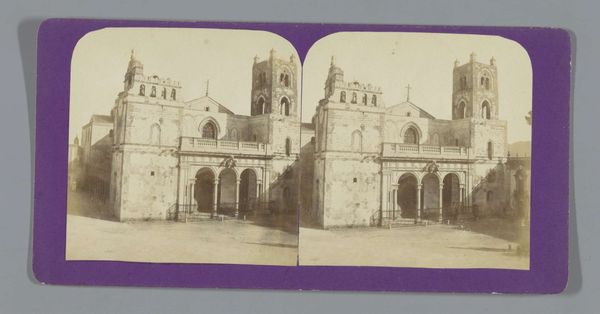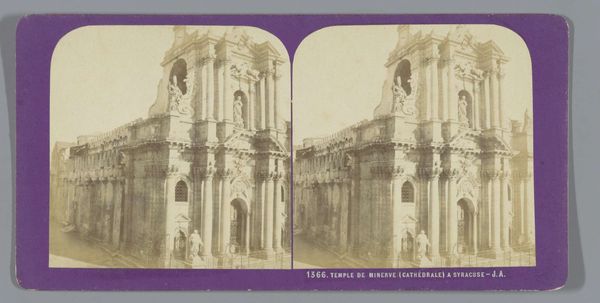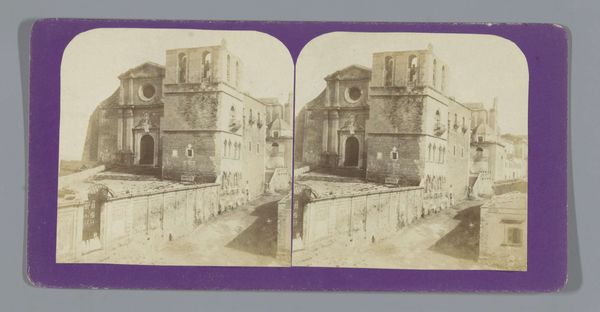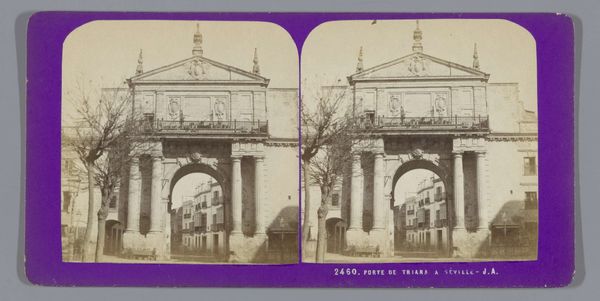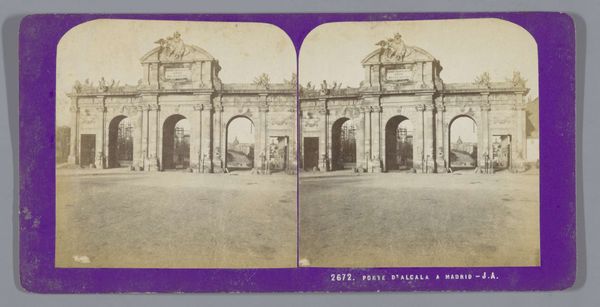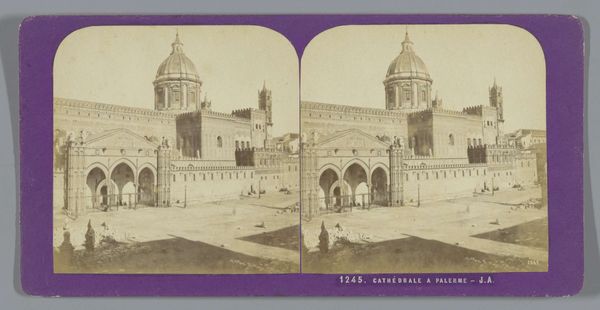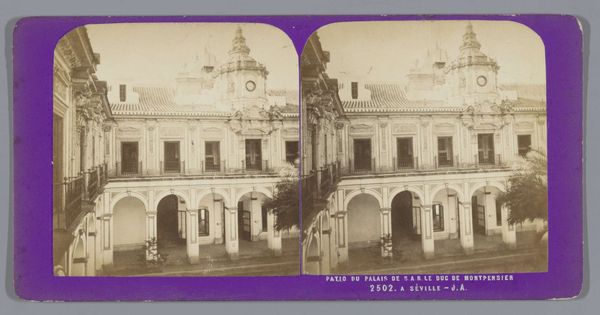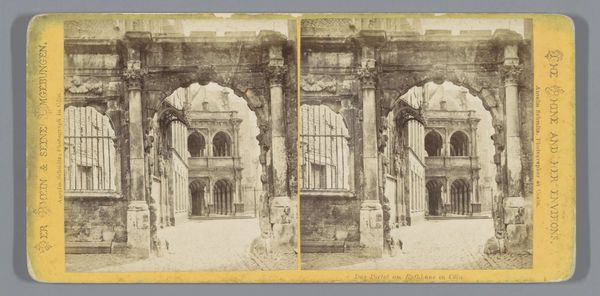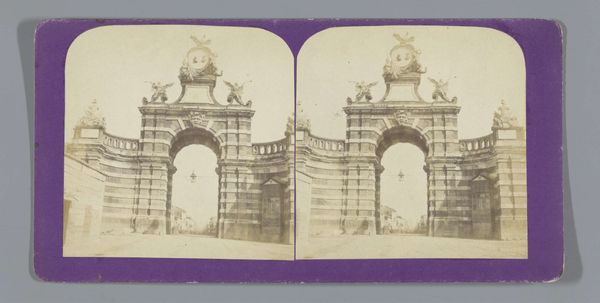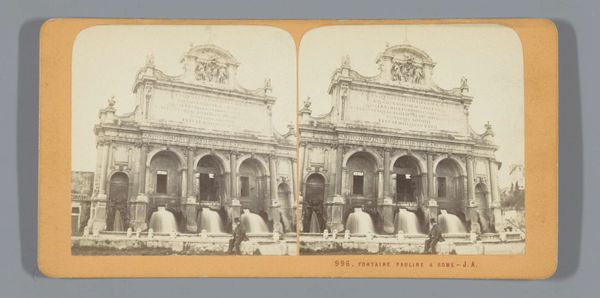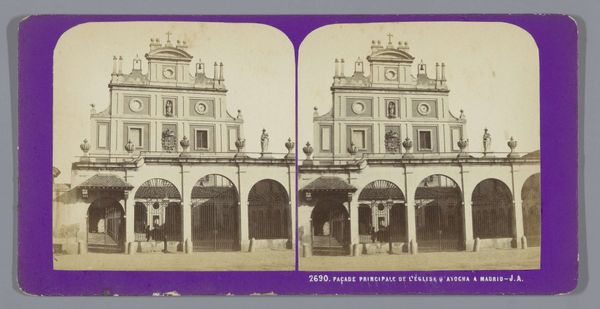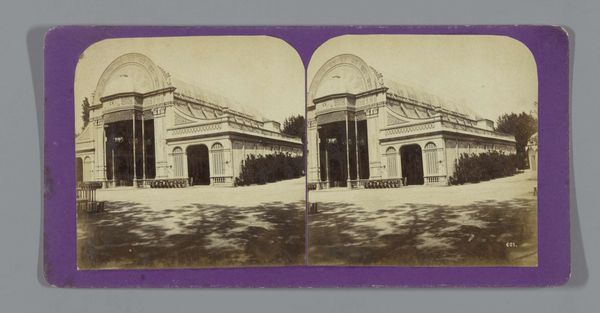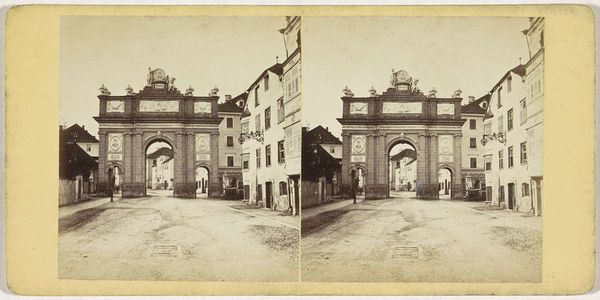
print, photography, albumen-print
# print
#
photography
#
coloured pencil
#
ancient-mediterranean
#
cityscape
#
albumen-print
#
realism
Dimensions: height 88 mm, width 176 mm
Copyright: Rijks Museum: Open Domain
Editor: Here we have Jean Andrieu's "Gezicht op de Porta Nuova te Palermo," created sometime between 1862 and 1876. It's an albumen print. The subject matter itself, this monumental gateway, evokes a sense of history and permanence. How do you interpret its significance? Curator: This photograph speaks volumes about the construction of Sicilian identity in the 19th century. Think about what this "realist" style achieved. What societal message might it communicate through its focus on specific historical architecture, like this ancient gate? Editor: Perhaps it aimed to portray Palermo as a city deeply rooted in the past, trying to capture a sense of timelessness? Curator: Precisely. The gate itself, Porta Nuova, was a very potent symbol loaded with civic importance. Images like these would be circulated among different social classes for many reasons. How does that impact our interpretation, knowing it was mass-produced through photography? Editor: I see what you mean! It's not just a picture of a gate, but it is about civic pride and maybe even national identity being mass-produced and disseminated. Was the choice of this subject perhaps driven by political undertones? Curator: Indeed! Following Italian unification, representing the physical landmarks reinforced and spread narratives and political agendas of inclusion into this "new" Italy. The image serves as a social and political tool to shape public memory and perceptions. Editor: This photograph feels less like a straightforward record and more like a constructed narrative about Palermo. Curator: Exactly! These kind of dialogues around a singular work help reveal layers upon layers of the forces at play during the depicted moment. It reminds us that any cultural object can be examined as both document and rhetorical tool. Editor: Thanks for sharing those insights! It definitely changed how I understand this picture.
Comments
No comments
Be the first to comment and join the conversation on the ultimate creative platform.
